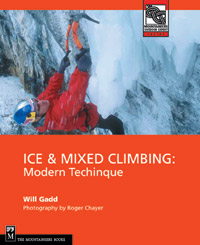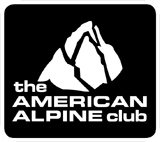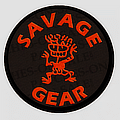|
|
Ice & Mixed Climbing: Modern Technique - Will Gadd
The Mountaineers
$29.95
Will Gadd is one of the best known names in mixed climbing today. He has put up many routes all over the world, including the amazing Call of the Curtain - 120m, III, M7, WI6 and Musashi, 5.9 A2 or MFH, WI 8-. In addition he has won numerous competitions including the ice climbing world cup. His expertise in the field of ice and mixed climbing is unmatched.
"Ice & Mixed Climbing" is the latest in the Mountaineers "Outdoor Expert" series. It contains 11 chapters, each chock full of techniques, hints, tips, and stories. Basic topics range from gear, how to dress, nutrition, basic ice climbing skills, anchors, belaying, leading and descending. There are also advanced chapters detailing steep and thin ice, free hanging ice and mixed techniques including protection and drytooling. Two additional chapters deal with getting around the mountains in the winter, avalanches, accidents and rescues.
While some of topics may seem obvious on the surface, there is usually something in each that makes it well worth the read. His discussion of clipping, for example, brings several points home about the amount of slack in the system if you miss the clip on a draw that's over your head. The description of "the battle of the bulge" is exactly what I teach my students. Though it seems so obvious when you read it, I see many climbers having difficulties with this situation and they would do well to read this section. Not getting too extended, moving your feet up high and placing a screw before moving over the top are all critical to safely negotiating bulges.
Will's chapter on Techniques For Steep Ice Climbing is particularly good. Interestingly enough, a majority of the techniques are ripped straight from the pages of any good rock technique book. Why am I not surprised? Backsteps, sidepulls, and underclings are all familiar to every rock climber. I've always thought that the good rock technique translates directly to the ice, and this chapter reinforces it. The section on thin ice technique is also excellent. I've always likened thin ice climbing to thin face climbing. His discussion sounds an awful lot like 5.11 face climbing! I also found the information about climbing free-hanging pillars particularly interesting, especially the comment "Never, never put protection into anything that you are even moderately concerned about breaking." Sounds like a good plan! A local climber's recent episode with a broken pillar at the Hanging Garden comes to mind...
Ever wondered where the term "steinpull" comes from. Turns out that Will and his buddies coined the term to describe placing the tip of your tool onto an edge or other feature under a little roof, and pulling up until the head of the tool cams into the roof. This is just one of many cool tips in this chapter. Filled with great pictures illustrating these concepts, the Mixed Climbing chapter gave me lots of ideas to try the next time I went out - and they worked.
Sure we all know we shouldn't overdress and have to eat well when outdoors in the winter, but in "Dress And Eat For Success" Gadd's humorous description of two teams hiking into the same climb illustrates his points perfectly. I also love the section on "Nutrition For Cold Climbing." Hey, anybody who's a fan of big greasy breakfasts before a long day of ice climbing is all right with me! On top of that I really agree with his concept of munching and drinking all through the day. Keeping the fire stoked and being well hydrated is critical to keeping your energy level high, and a high energy level is critical to success on the ice.
I've always had a hard time with consistent training, but I found his 3 level approach to make perfect sense. First is Periodization, a concept based on rest/off-season (spring/summer), preseason (fall), and in-season (winter). The second is Specific Adaption to Imposed Demand (SAID). As I understand it, this is about patterning the muscles that are most important to the activity you are pursuing it can remember the movements that you want to execute. I can really relate to this because I was a musician and it is very similar to the way I used to practice. Last is having fun. As he puts it "if I don't have fun then I won't train."
Will's conversational style makes for a good read. With a ton of useful information for ice climbers of all levels, great illustrations and superb photos by Roger Chayer, Ice & Mixed Climbing will make an excellent addition to your climbing library. I highly recommend this book.
236 pages, lots of pictures
Al Hospers
March 2004
|











